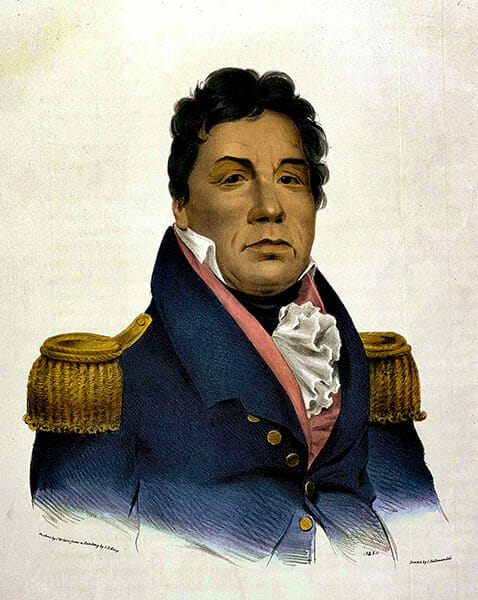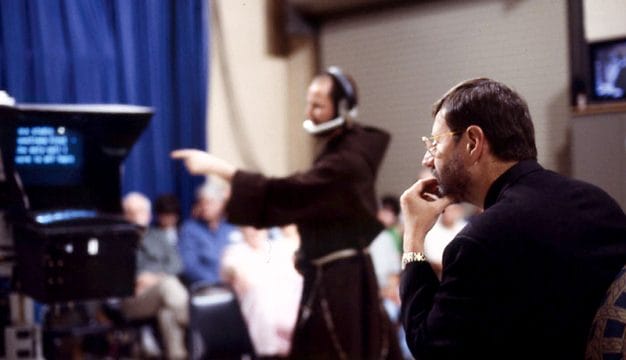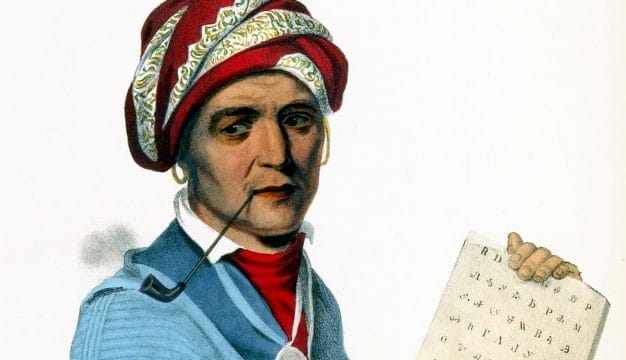Pushmataha
Pushmataha is perhaps the best-known Choctaw leader of the nineteenth century. He is most famous for negotiating treaties with the U.S. government that allied the Choctaws with the Americans against the British in the War of 1812 and for leading Choctaw forces in aid of Gen. Andrew Jackson against the Red Stick Creek faction during the Creek War of 1813-14. The community of Pushmataha, in northwestern Choctaw County, is named in his honor.
What little is known about Pushmataha’s early life comes from the writings of physician Gideon Lincecum, who lived in Choctaw territory from 1818 to the mid-1830s, and from Horatio Cushman, whose parents were missionaries among the southeastern tribes in the early nineteenth century. Both authors wrote of their experiences long after they happened, and Cushman’s memoir is noted for its inconsistencies and unreliability.
 Pushmataha
According to their recollections, Pushmataha was born around 1764 in the traditional Choctaw territory, which encompassed much of east-central Mississippi and west-central Alabama. His birthplace was most likely near what is now Macon, Mississippi. He was almost certainly involved early on in warfare with the neighboring Creeks of central Alabama. The war between the groups ended around 1777, and thus it is unlikely that Pushmataha played any leadership role, if his birthdate is accurate. Warfare among the Choctaw and the surrounding groups, including the Osage and the Caddo to the west, increased during Pushmataha’s boyhood as the Choctaw depleted the deer herds in their territory and were forced to range farther. Pushmataha soon gained a reputation as a fierce warrior; indeed his name, which is Apushamatahahubi in the Choctaw language, means “messenger of death.”
Pushmataha
According to their recollections, Pushmataha was born around 1764 in the traditional Choctaw territory, which encompassed much of east-central Mississippi and west-central Alabama. His birthplace was most likely near what is now Macon, Mississippi. He was almost certainly involved early on in warfare with the neighboring Creeks of central Alabama. The war between the groups ended around 1777, and thus it is unlikely that Pushmataha played any leadership role, if his birthdate is accurate. Warfare among the Choctaw and the surrounding groups, including the Osage and the Caddo to the west, increased during Pushmataha’s boyhood as the Choctaw depleted the deer herds in their territory and were forced to range farther. Pushmataha soon gained a reputation as a fierce warrior; indeed his name, which is Apushamatahahubi in the Choctaw language, means “messenger of death.”
No record of Pushmataha’s parents exists, but they do not appear to have belonged to any of the important Choctaw clans. Typically, Choctaw leaders inherited their positions through these clans, but men such as Pushmataha, who gained skill and fame through their actions, also could be elevated to leadership positions. By the time he was a young adult, Pushmataha was representing the Choctaw Six Towns Division in tribal meetings and had become a chief by 1800. In this capacity, he began serving as a negotiator and representative to the United States and to other Indian nations, gaining a reputation as a persuasive and imposing speaker. In 1802, he participated in treaty negotiations with U.S. representatives at Fort Confederation and in several other negotiations thereafter.
As the War of 1812 heated up, conflicts expanded into the southeastern interior of the United States and worsened already-existing tensions among opposing factions within the Creek Nation. One outcome of these tensions came to be known as the Fort Mims Massacre, in which Creek warriors from the traditionalist Red Stick faction attacked a settlement near present-day Tensaw, Baldwin County. Pushmataha raised a force of Choctaw warriors to assist Gen. Andrew Jackson in pursuing the perpetrators. Pushmataha and the Choctaws would go on to assist Jackson in other important battles during the Creek War of 1813-14, including the Battle of Holy Ground and the Battle of Horseshoe Bend.
Instead of rewarding Choctaw assistance after the war, however, the federal government imposed land cessions that transferred millions of acres in Choctaw territory to the United States. On October 24, 1816, Choctaw leaders signed the Treaty of Fort St. Stephens (site of the first state capital), ceding 10,000 acres of land east of the Tombigbee River in exchange for $6,000 per year over 20 years. It is not known if Pushmataha attended this meeting. Four years later, on October 18, 1820, the Choctaws again met with federal officials, including Andrew Jackson, about another land-cession treaty. This time, Pushmataha was one of the chief negotiators. Under the terms of the treaty, the Choctaws were to cede half of their land in what was by then the state of Mississippi in exchange for land in Arkansas. During the proceedings, Pushmataha accused Jackson, his former ally in the Creek War, of exaggerating the quality of the land offered in exchange and resisted signing the treaty. The Choctaw leader also was aware that white settlers already had established homesteads on the land. Despite Pushmataha’s protests, threats of retaliation from Jackson forced the Choctaw leaders to sign the treaty.
In 1824, Pushmataha and several other Choctaw chiefs travelled to Washington, D.C., for further negotiations about the settler problem. While there, Pushmataha posed for a portrait by renowned painter Charles Bird King, who painted some of the most famous figures of the nineteenth century. Not long after his portrait was completed, Pushmataha fell ill and died. He was given a military funeral and buried in the Congressional Cemetery in Washington.
Additional Resources
Cushman, H. B. History of the Choctaw, Chickasaw, and Natchez Indians. Norman: University of Oklahoma Press, 1999.
O’Brien, Greg. Choctaws in a Revolutionary Age, 1750-1830. Lincoln: University of Nebraska Press, 2005.



